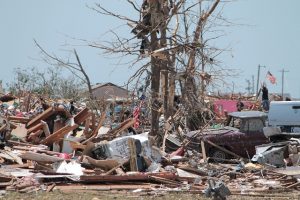 The recent hurricanes in Texas, Florida, and along the northeast coast provided some food for thought. Many of us were reminded of the devastating effects of Sandy in 2012, some of which still linger today. So what happens after natural disasters like these? What are homeowners to do as they seek to recover from the damage inflicted by nature?
The recent hurricanes in Texas, Florida, and along the northeast coast provided some food for thought. Many of us were reminded of the devastating effects of Sandy in 2012, some of which still linger today. So what happens after natural disasters like these? What are homeowners to do as they seek to recover from the damage inflicted by nature?
What you do, and the extent to which we can help, really depends on how much damage your home suffered. Things like cleaning and removing debris can be handled by My Divine Concierge or you and your own family. If you are looking at any kind of reconstruction, that is best left to skilled professionals.
Below is a list of things that tend to be necessary after most natural disasters. Keep in mind that the biggest enemy in storms like Sandy is water. Our houses can withstand pretty stiff winds, but no house can withstand an inundation of water.
1. Remove and Discard Furniture
The first thing that needs to be done involves furniture. Before floors and walls can be inspected, rooms need to be cleared of debris, which usually starts with furniture. Each piece of furniture has to be inspected for damage. Then the homeowner needs to decide whether to keep it or not. Pieces to be discarded have to be hauled outside; pieces to be kept have to be moved to a location out of the way of inspectors.
2. Sort Damaged Possessions
After furniture has been dealt with comes the unpleasant process of having to sort through damaged possessions. This can be the most heartbreaking part of the process for many people. They will be sifting through photographs and family antiques. They will be faced with decisions about saving mementos of the past or throwing them in the trash heap.
3. Remove Saturated Carpets
Any natural disaster that involves water inundation creates a scenario in which carpets are not salvageable. They have to be ripped up and removed from the house. This is no easy task, given how much water a carpet can hold. This is one task where the homeowner absolutely needs help.
4. Cut Away Wet Drywall
Even after water recedes and debris is cleared away, there is an enemy lurking in the home affected by a natural disaster: mold. The key to preventing an entire house from being overwhelmed is to cut away and remove any drywall that got saturated. If you had 2 inches of water in your home, that probably means cutting away 3 to 4 inches of drywall throughout the entire ground floor.
5. Cleaning Residual Mold
Mold proliferates in areas where humidity levels are high and temperatures are warm. So when a natural disaster results in flooding and the loss of power, an optimal environment for mold is created. Homeowners should check every remaining nook and cranny of their homes in the search for mold. When mold is found, a little bleach will take care of it.
6. Dry Out the Home
It’s obviously necessary to dry out a water-damaged home before reconstruction can begin. Disaster recovery services use large, commercial-grade fans to do just that. You can dry out your home yourself by using as many fans as you can get your hands on. Open the windows and create a flow of air that constantly moves through the house in a single direction. Homes suffering only minor water damage can be dried out in just a few hours.
After all is said and done, there will be insurance claims to file, contractors to work with, and new purchases make. It is by no means a pleasant experience. If you need help recovering after a natural disaster, My Divine Concierge is here to do what we can. We can help you clean up, clear out, and prepare your home for construction.
